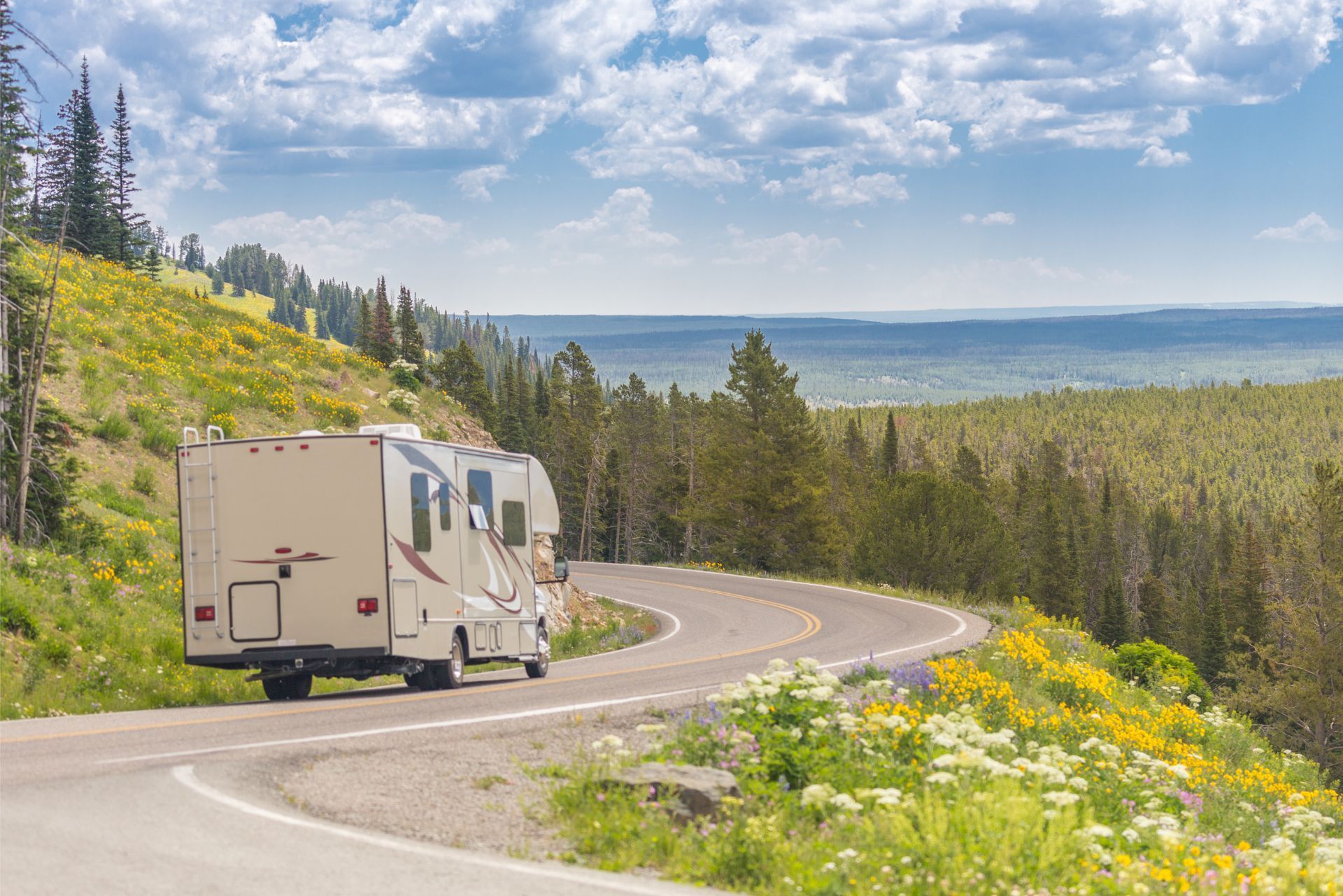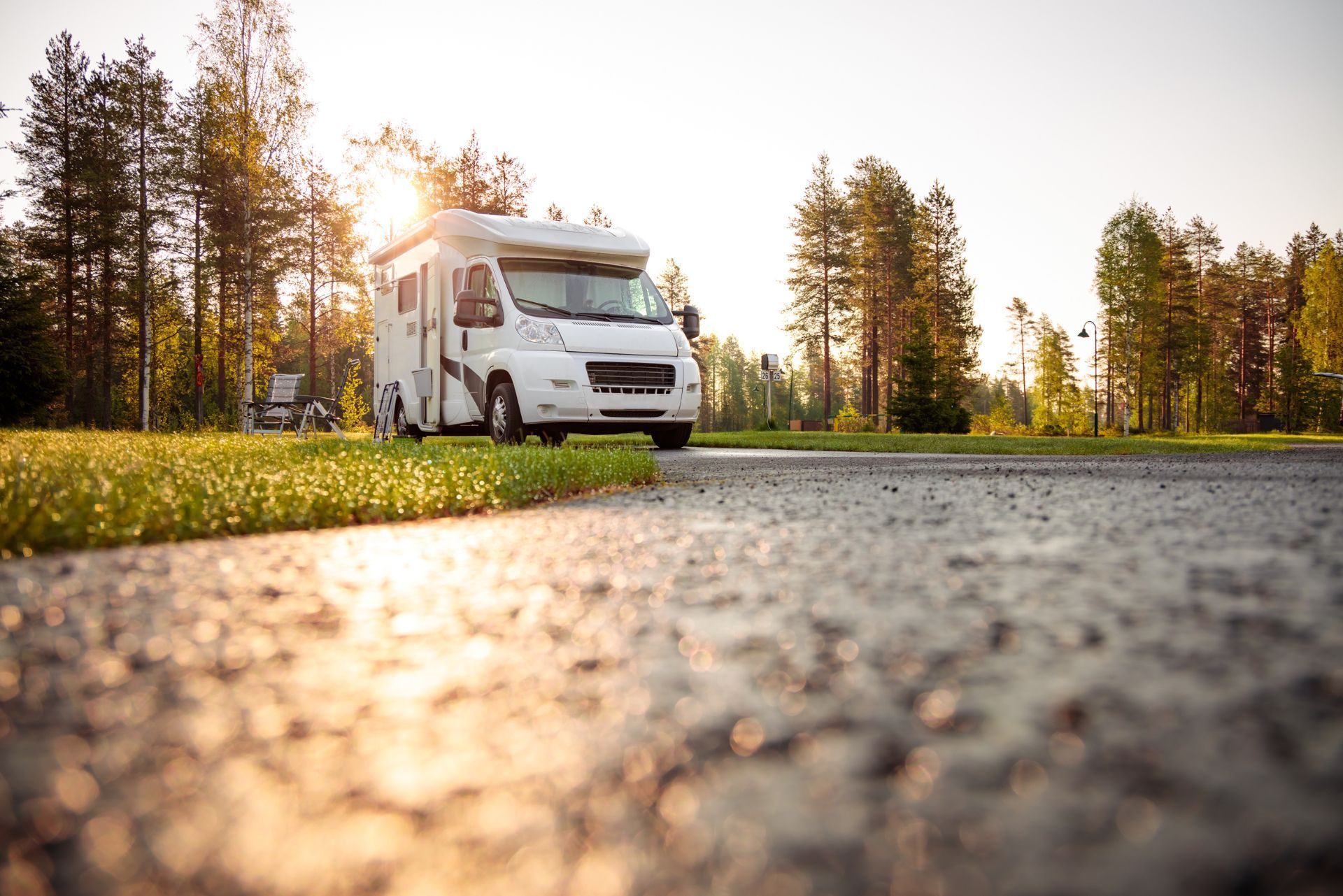Top 3 Recommended Policies

By: David Graves
Licensed Personal Insurance Specialist
425-320-4280
Washington is one of the most RV-friendly states in the country. From the coastal charms of the Olympic Peninsula to the snow-dusted peaks of the Cascades and the sun-baked vineyards of the Columbia Valley, there is no shortage of scenic highways begging to be explored behind the wheel of a motorhome, camper van, or travel trailer. Yet every mile brings exposure to changing weather, narrow mountain passes, and bustling urban traffic. Because a recreational vehicle is both a home and a vehicle, protecting it requires an insurance strategy that goes beyond a standard auto policy. Understanding the coverage requirements laid out by Olympia lawmakers, the optional protections that can save a cross-country road trip, and the cost factors that influence premiums is essential before turning the ignition.
Why Specialized RV Insurance Matters in Washington
A 2023 survey by the Recreational Vehicle Industry Association ranked Washington among the ten states with the highest number of registered RVs per capita, noting that nearly 200,000 households now own at least one rig. With that popularity comes risk: state troopers recorded more than 2,700 RV-related collisions over the last five years, and a third of those incidents involved property damage exceeding $15,000. Standard auto policies typically treat an RV as just another truck, capping personal property payouts at a few hundred dollars and omitting coverage for the attached awning, satellite dish, or solar panels that make modern rigs so valuable.
Specialized RV insurance recognizes the blended nature of a rolling residence. Policies are written with higher liability limits, flexible settlement options for total losses (actual cash value, agreed value, or replacement cost), and optional add-ons for things like vacation liability or full-timer liability when the coach becomes a primary residence. In Washington’s patchwork of urban congestion and rugged wilderness, these tailored protections aren’t a luxury— they are the only realistic way to shield both personal assets and travel dreams from an unexpected setback.
Moreover, the unique lifestyle associated with RV ownership in Washington often involves extended trips to national parks, coastal getaways, and mountain retreats. Each of these adventures presents its own set of challenges and potential hazards. For instance, while navigating the scenic but winding roads of the Olympic Peninsula, an RV owner may encounter sudden weather changes, wildlife crossings, or even mechanical failures. Specialized RV insurance can cover roadside assistance, ensuring that help is just a call away, whether you're stuck on a remote trail or in a bustling city. This peace of mind allows RV enthusiasts to fully immerse themselves in the beauty of Washington’s landscapes without the looming worry of unforeseen expenses.
Additionally, many RV owners in Washington participate in vibrant communities and events, from local RV shows to camping festivals. These gatherings often involve shared resources, such as communal fire pits or group excursions, which can increase the risk of accidents or property damage. Specialized RV insurance can provide coverage for these communal activities, protecting owners from liabilities that may arise during group events. This aspect of tailored insurance is particularly important in a state where outdoor activities and community engagement are deeply woven into the fabric of RV culture, allowing owners to enjoy their experiences without the fear of financial repercussions.

State Requirements and Minimum Liability Limits
Washington law mirrors most jurisdictions in defining a self-propelled RV as a “motor vehicle.” That classification triggers the same minimum liability limits required for passenger cars: $25,000 bodily injury per person, $50,000 bodily injury per accident, and $10,000 property damage. Trailers and fifth-wheels are not required to carry a separate liability policy as long as they are towed by an insured vehicle; however, that exemption does not apply to collision and comprehensive claims, which must be purchased separately if owners want protection for the trailer itself.
While the statutory minimum satisfies the Department of Licensing, it rarely covers the true cost of an RV crash. The average motorhome weighs seven to ten times more than a midsize sedan and can cause extensive structural damage in even low-speed collisions. Medical bills can easily eclipse the $25,000 minimum, and litigants in Washington can pursue pain-and-suffering damages well beyond that figure. As a result, most insurers recommend at least $100,000/$300,000/$50,000 limits, and full-time RVers frequently carry $500,000 combined single-limit policies, especially when traveling near Seattle and Tacoma’s busy interstates.
In addition to understanding the minimum liability requirements, RV owners should be aware of the various types of coverage available to them. Comprehensive coverage, for instance, protects against non-collision-related incidents such as theft, vandalism, or natural disasters, which can be particularly important for those who park their RVs in less secure locations or in areas prone to severe weather. Collision coverage, on the other hand, is essential for protecting against damages incurred during an accident, regardless of fault. These additional layers of protection can provide peace of mind for RV owners, allowing them to enjoy their travels without the constant worry of potential financial repercussions from unforeseen events.
Moreover, Washington's unique geography and climate can also influence the type of insurance coverage RV owners might consider. With the state's diverse landscapes ranging from coastal areas to mountainous regions, RV enthusiasts may encounter a variety of driving conditions. This variability can increase the likelihood of accidents, particularly in winter months when icy roads are common in the northern parts of the state. Consequently, RV owners should evaluate their insurance needs regularly, especially if they plan to explore remote areas or engage in activities such as off-roading, which may require specialized coverage. Understanding these factors can help RV owners make informed decisions about their insurance policies, ensuring they are adequately protected while enjoying the beauty of Washington's outdoor adventures.
Regional Hazards Unique to the Evergreen State
Washington’s dramatic geography spices up every road trip but also creates distinct insurance considerations. In the Cascade Range, rapid elevation changes and hairpin turns make brake failures and rollovers more likely. The western half of the state averages 38 inches of rain annually; hydroplaning-related accidents peak each November when leaf-clogged drains flood highways. East of the mountains, wildfire season now stretches from June to October, and several RV parks in the Yakima and Wenatchee Valleys have been evacuated in recent years due to fast-moving burns.
Winter further complicates matters. Snoqualmie Pass alone sees roughly 80 inches of snowfall, and chain-up areas frequently clog with rigs unfamiliar with icy conditions. Hailstorms are rarer but can dent aluminum siding beyond economical repair. Comprehensive coverage, which pays for non-collision perils like fire, falling objects, and severe weather, becomes an essential line item rather than an optional upgrade. Owners who store their rigs outdoors near saltwater—such as in Gig Harbor, Anacortes, or the San Juan Islands—also benefit from corrosion protection endorsements that reimburse for rust-related damage.
The Core Building Blocks of an RV Policy
RV insurance borrows from both the auto and homeowners playbooks, combining vehicle-centric coverage with property protections. The five foundational components are liability, collision, comprehensive, medical payments, and uninsured/underinsured motorist (UM/UIM) coverage.
Liability pays for bodily injury and property damage that an owner causes to others. Because Washington is a comparative-fault state, even being partially at fault can lead to substantial out-of-pocket costs if liability limits are too low.
Collision handles damage to the RV itself after an accident, regardless of fault. This includes hitting another vehicle, a guardrail, or an unexpected deer while descending Blewett Pass at dusk.
Comprehensive responds to non-collision events: theft from a downtown Spokane storage lot, a branch crashing through a skylight in Olympia, or smoke damage from a wildfire drifting across Chelan.
Medical payments cover immediate healthcare expenses for the driver and passengers, no matter who caused the crash. Limits are modest—often $1,000 to $10,000—but bridge the gap before health insurance or liability settlements kick in.
Uninsured/underinsured motorist coverage steps in when the other driver has inadequate insurance, a scenario that affects roughly 21 percent of Washington crashes, according to the Insurance Research Council. With many RVs valued at six figures, carrying UM/UIM limits equal to liability limits is a prudent move.
Popular Add-Ons and Endorsements Worth Considering
Beyond the basics, insurers offer a menu of endorsements. Vacation liability extends premises-type liability when the rig is parked and used as a temporary residence, essentially mimicking homeowners coverage for slip-and-fall injuries at a campsite. Full-timers liability expands the same idea year-round for people who have no fixed residence.
Personal effects coverage is another heavy-hitter. While comprehensive pays for the shell, personal effects covers the contents: mountain bikes, paddleboards, laptops, cookware, and clothing. Policies often start with a $3,000 sublimit and can be increased to $99,000 or more for luxury coaches.
Other endorsements include roadside assistance (with broader towing radiuses for large rigs), disappearing deductibles that shrink over claim-free years, emergency expense reimbursement for hotel stays after a loss, and total loss replacement that swaps a wrecked coach for a brand-new model within the first five model years. Although each add-on nudges the premium upward, bundling multiple features often triggers multi-policy or package discounts.
What Determines Your Premium?
Insurers rely on actuarial models that weigh dozens of data points. The biggest drivers remain the RV’s value, class, and usage pattern. Class A diesel pushers costing half a million dollars are inherently pricier to insure than pop-up campers, and rigs used 365 days a year log more exposure than weekend-only units.
Garaging ZIP code also plays a role. A coach parked in downtown Seattle faces higher theft risk than one stored in rural Okanogan County. Annual mileage, driver age, driving record, and credit-based insurance scores further influence rates. For example, a 55-year-old retiree with a clean record can expect to pay roughly $900 to $1,400 per year for full coverage on a $140,000 Class C, while a 28-year-old adventurer might pay 30 percent more for the same rig.
Seven Practical Ways to Trim Costs
1. Raise the deductible. Jumping from a $500 to a $1,000 collision deductible can slice premiums by 10–15 percent without sacrificing essential protections.
2. Complete a certified RV safety course. The Washington State Parks & Recreation Commission recognizes several programs that translate into insurer discounts.
3. Bundle policies. Pairing RV coverage with auto, motorcycle, or homeowners insurance often unlocks multi-line savings of up to 18 percent.
4. Install anti-theft technology. GPS trackers and battery-kill switches deter thieves and look favorable on underwriting questionnaires.
5. Store indoors when possible. Covered storage cuts exposure to wind, hail, and UV damage, earning a break on comprehensive rates.
6. Limit full-timer declarations. If the rig truly is recreational, avoid full-timer liability unless needed; that endorsement can add hundreds annually.
7. Shop consistently. Every two or three years, request fresh quotes. Market competition and improved credit scores can drop rates even without claims-free discounts.
As with any insurance strategy, savings should never trump adequate protection. A policy that cannot rebuild financial stability after a catastrophic loss offers little real value, no matter how inexpensive.
The Washington Claims Process in Plain English
When an incident occurs, state law obligates policyholders to report the claim “promptly,” though no exact hour-based deadline exists. File as soon as practical, ideally within 24 hours, using the insurer’s mobile app or 24/7 hotline. Photograph the scene, gather contact information for witnesses, and, in cases involving another vehicle, obtain a collision report from the Washington State Patrol or local police department.
Insurers must acknowledge receipt of the claim within ten business days and provide status updates every thirty. Washington’s Office of the Insurance Commissioner enforces strict fair-claims practices; failure to settle equitably can result in fines and even treble damages. If repairs are needed, policyholders may select their own shop, though insurers often maintain preferred networks that guarantee workmanship. Total losses are settled based on the valuation option selected—actual cash value, agreed value, or replacement cost—minus any deductible.
How to Choose an RV-Savvy Insurer
Start by verifying that the carrier is licensed to sell in Washington; the Commissioner’s online portal maintains an up-to-date roster and complaint index. Financial strength ratings from A.M. Best or Standard & Poor’s gauge an insurer’s ability to pay claims, while consumer satisfaction surveys reveal how smoothly those claims are processed.
Speak with independent agents who handle multiple companies and understand RV intricacies. Ask about coverage gaps—such as whether rodent infestation, mold, or depreciation on awnings are excluded—and request side-by-side quotes showing varying deductibles and liability limits. Finally, consider value-added perks: some carriers waive the deductible for windshield repairs, provide pet injury coverage, or include trip-interruption benefits for ferry cancellations, a useful perk given Washington’s reliance on the state ferry system.

Frequently Asked Questions
Do I need coverage while my RV is in storage?
Yes. Fire, theft, and vandalism remain threats even when the coach is parked. Many companies offer “storage mode” rates that suspend liability and collision but keep comprehensive in force, reducing premiums by up to 60 percent.
Will my homeowners policy cover items stolen from the RV?
Possibly, but only after meeting your homeowners deductible and within your off-premises personal property limit, typically 10 percent of contents coverage. A standalone personal effects endorsement through the RV policy is usually more affordable and has a lower deductible.
Is Mexico or Canada travel automatically covered?
Trips into British Columbia, Alberta, and beyond are often included, but the carrier may require a Canada liability card. Mexico coverage is trickier; most U.S. insurers exclude it and mandate a specially licensed Mexican policy for legal compliance. Always notify the agent before crossing the border.
Final Thoughts: Make Protection Part of the Adventure
Washington’s endless byways invite exploration, but every winding pass and misty shoreline introduces uncertainty. A well-crafted RV insurance policy transforms that uncertainty into manageable risk, letting travelers focus on roasting marshmallows under pines and spotting orcas off Whidbey Island rather than worrying about repair bills. By understanding statutory requirements, selecting coverage that mirrors personal travel style, and revisiting the policy as the rig or lifestyle evolves, owners can keep their home on wheels—and the memories it carries—secure for years of Evergreen State adventures.

